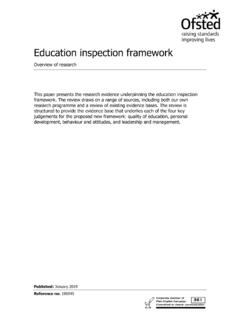Transcription of Post partum Hemorrhage: Best Practices to Reduce Health ...
1 1/21/20191 post partum hemorrhage : Best Practices to Reduce Health Disparities LaShea Wattie , MSN, APRN, AGCNS-BC, RNC-OB, C-EFMS ystem Clinical Nurse Specialist, PerinatalObjectivesImproving Patient Outcomes Promote equal access of evidence based care Practices Discuss effective implementation strategies and tactics to improve clinician practice through Awhonn PPH project, OPS course. Review best practice recommendations for TXA use in the OB patient in response to Postpartum hemorrhage (PPH) Discuss how to access resources and implement changes in your institution 121/21/20192 Magnitude of the Problem Each year approximately 125, 000 women in the experience postpartum hemorrhage , its leading cause of PREVENTABLE death (Awhonn, 2014) Every year there are 14 million cases of postpartum hemorrhage worldwide (USAID, 2010)
2 Estimated that 90% of PPH occurs within 4 hours after PATIENT SAFETY RISK reduction SAFE CLINICAL OUTCOMESP rocesses ORDER SETS PROTOCOLS EDUCATION, PATIENT TEACHING DISPARITIES671/21/201949101/21/20195 Cultural Competency & Communication BiasLiteracyCo-morbiditiesInner-Institut ional DisparitiesFragmentation Cultural Competency: Consider the Source Cultural diversity officer Text books : Are they current? Who was their source for obtaining the information? Internet searches: Are you using a reproable website? Breast pump rental example11141/21/20196 JOGNN IN FOCUS Continuing Nursing Education (CNE) Credit A total of one contact hour may be earned as CNE credit for reading Applying the Generic Errors Modeling System to Obstetric hemorrhage Quality Improvement Efforts , and for completing an online post -test and evaluation Applying the Generic Errors Modeling System to Obstetric hemorrhage Quality Improvement Efforts AWHONN PPH Project Goals Goal 1: Promote equal access of evidence-based care Practices Goal 2: Support effective implementation strategies Recognition -Readiness -Response Goal 3.
3 Identify facilitators and barriers to making improvements and disseminate lessons learned15161/21/20197 AWHONN PPH Project Regional Leaders 17181/21/20198 Examples of Data Collection ICU Admissions Blood transfusionsOutcome Measures Develop Policies and Procedures Education, Drills, DebriefsStructure Measures 3 Risk Assessments (Admission, Pre-birth, post -birth) Quantification of Blood LossProcess MeasuresCauses of pregnancy-related death in the United States: 2006 201019201/21/20199 Footnotes available in notes : National Center for Health Statistics, final mortality data; National Center for Health Statistics, final natality data. Retrieved January 29, 2014, from mortality ratesGeorgia and US, 2003-2007 Average Georgia (GA) per 100,000 Ranks 50th 88 Birthing Hospitals Recognition Tracking PPH to discuss in OB department meetings, Women s Safety & Quality Meeting Charge nurses fill out event reporting record so that everyone in leadership would receive notification of the event.
4 Excel sheet with pertinent logistics about our PPH. Trying to determine any identifying factors such as: OB practice, time of event, time of transfer, type of delivery 21221/21/201910 Recognition Developed MOH scoring tool Scored on admission and every shift for changes MOH scoring tool-High Risk Patients PINK banner bar for better identification/recognition for all team members taking care of the patient. White boards pink rose MOH Risk Assessment Scoring Tool23241/21/201911 Current Awhonn PPH Project Recommendations Admission Pre-birth post -birth RecognitionHigh Risk Banner25261/21/201912 Readiness Postpartum hemorrhage cart Kept on labor & delivery OB rapid response team L & D charge nurse or who activates the team?
5 What is TXA? Tranexamic Acid (TXA) antifibrinolytic agent Given IV to prevent or Reduce bleeding and Reduce the need for transfusions Has been used to treat hemorrhage in trauma, Jehovah s Witness patients, burn patients and dental Practices for years Now being used as an additional treatment for PPH in OB patients (off-label)27281/21/201913 What is TXA? Early use of TXA for PPH within 3 HOURSof birth can Reduce risk of death due to bleeding in PPH For vaginal orC-section births OTHER BENEFITS OF TXA: Relatively inexpensive Readily available Easy to administerWHO(World Health Org) WHORECOMMENDATIONS for OB: Considered as part of the standard PPH treatment package Administered as soon aspossible after onset of bleeding Should notbe started > 3 hours after birth Should be administered via IV route only Should be used regardless of whether the bleeding is due to genital tract trauma or other causes29301/21/201914 TXA should NOT be given to women with a clear contraindication to anti-fibrinolytic therapy, including TXA: known thromboembolic event during pregnancy history of coagulopathy active intravascular clotting known hypersensitivity to TXA RARE r/t thromboembolic events.
6 Blurry vision or changes in vision Confusion Dizziness or lightheadedness Numbness of the hands Pain, redness, or swelling in the arm or leg Sudden shortness of breath or troubled breathing Convulsions or seizures Chest pain Increased heart rate31321/21/201915 RARE generalized; Anxiety Increased thirst Cough Loss of appetite Sudden change in urinary frequency33341/21/201916 Obstetric hemorrhage Key ElementsResponse -Every Hemorrhage1. Unit-standard, stage-based, obstetric hemorrhage emergency management plan with checklists2. Support program for patients, families, and staff for all significant hemorrhagesCMQCC OB hemorrhage Care Guidelines35361/21/201917 Resources for Guidelines Council on Patient Safety in Women's Health Care and the Alliance for Innovation on Maternal Health Hospital Engagement Network Obstetrical Harm Change Package (AHA) Safety Program for perinatal Care (AHRQ) OB hemorrhage QI Toolkits.
7 Full of available Management Quantification of Blood LossMaternal Warning SignsSimulation Based Training Transfusion TherapyTeam DebriefingPPH Risk Assessment AWHONN PPH Education Modules oOn-lineoFastoSelf-pacedoTeam Training oCertificate of completion Response Quick review of events Identify process errors : individual, team & systemDebriefings Management decisions Work flow Patient decisions/ Patient characteristics Root-Cause Analysis39401/21/201919 Response A 24-year-old woman, Gravida2 Para 1 at 38 weeks gestationwas induced for tired of being pregnant :After an 8-hour active phase and 2-hour second-stage, she gave birth(spontaneous vaginal delivery) to an 8 pound, 6 ounce infant.
8 After placentaldelivery, she had an episode of uterine atonythat firmedwith second episode of uterine atonyresponded to intramuscular methylergonovine(Methergine) and the physician went home at 1 The nursescalled the physician 30 minutes later to report more bleeding and furthermethylergonovinewas ordered. Sixty minutes after the call, the physicianperformed a dilatation and curettage (D&C) with minimal return of woman received more methylergonovine. Forty-fiveminutes later asecond D&C was performed, again with minimal returns. EBL at this pointwas >2,000 delays in blood transfusion occurred because ofinability to findproper blood administration tubing.
9 Anesthesia wasdelayed, but a second started for more crystalloid. Vital signs becamemarkedly abnormal: pulse = 144 beats/min, blood pressure 80/30 further dose of methylergonovinewas given and the woman was takenfor a third D&C. She had received 2 units of packed red blood cells by thispoint. After the D&C she had a cardiac arrest from hypovolemiaandhypoxia, and was taken to the ICU, where she died 3 hours later despiteintensive supportive care and resuscitative Study41421/21/201920 Benefits of QBL QBL reduces the likelihood that clinicians will underestimate the volume of blood loss and delay early recognition and treatment. Improves maternal outcomes: Improves prompt recognition and response to hemorrhage Decreases denial of blood loss and delay of live saving interventionsBenefitsofQBL43441/21/20192 1 Practice Brief Quantification of Blood Loss (QBL) Suggested Equipment Calibrated under-buttocks drapes to measure blood loss Dry weight card, laminated and attached to all scales, for measurement of items that may become blood-soaked when a woman is in labor or after giving birth Scales to weigh blood-soaked items, ideally in every labor and operating room and on the postpartum unit.
10 Save costs by using the scales used to weigh newborns Formulas inserted into the electronic charting system that automatically deduct dry weights from wet weights of standard supplies such as chuxand peri-padsMethods to Estimate Blood Loss Quantifying blood loss by measuring Use graduated collection containers (C/S and vaginal deliveries) Account for other fluids (amniotic fluid, urine, irrigation45461/21/201922 QBL Calculator Vaginal and Cesarean Births For VaginalBirths Begin right after the infant s birth: Note amniotic fluid, urine, etc. in the under-buttocks bag prior to birth. (applicable if SROM occurs close to birth or amnioinfusion performed.))


